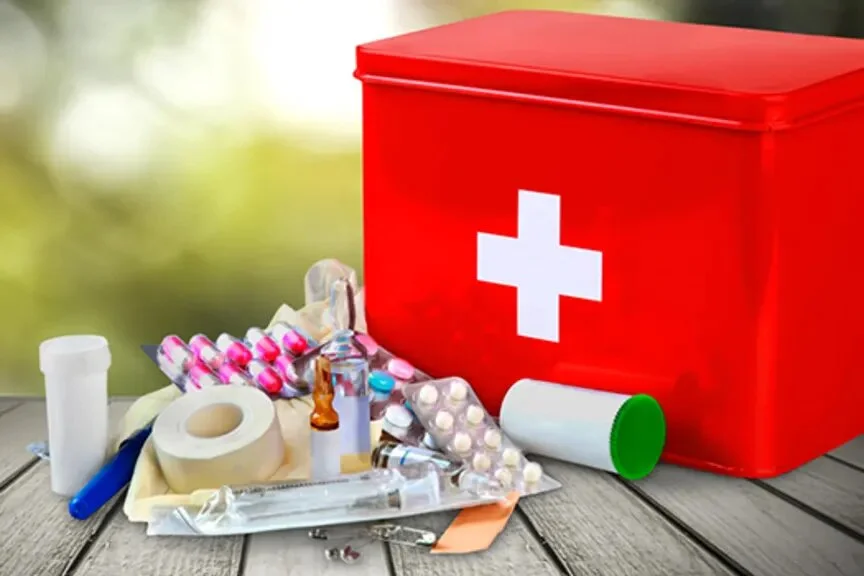Accidents happen to everyone. Regardless of caution, they’re inevitable. But preparation can turn us into lifesavers.
First aid has the power to rescue lives. It stops injuries from escalating before professional medical care comes. Plus, knowing first aid gives a sense of security to those around you.
Given the value of first aid, readiness is key. Even if you don’t pursue advanced training, knowing the fundamentals is crucial.
So, we present essential first-aid tips everyone should be aware of. Basic first aid doesn’t require specialized tools, yet it can make a lifesaving difference.
What Are The Essential Things To Keep In First Aid?
When planning for unforeseen medical emergencies, a well-equipped first aid kit is crucial. It provides immediate relief and can be pivotal in preventing minor injuries from becoming severe. A strategically compiled first aid kit can make a significant difference when waiting for professional medical assistance, ensuring safety and timely intervention.
Essential Things to Keep In First Aid
- Bandages and Gauze: Various sizes for different injuries.
- Antiseptic Wipes: For cleaning wounds.
- Tweezers: Useful for removing splinters.
- Scissors: To cut bandages or clothing.
- Pain Relievers: Like ibuprofen or aspirin.
- Antibiotic Ointment: To prevent infections.
- Hydrocortisone Cream: For rashes or itching.
- Thermometer: To check for fever.
- Gloves: Preferably latex-free for hygiene and protection.
- CPR Face Shield: For resuscitation without direct contact.
- Instant Cold Packs: For swelling or pain.
- First Aid Manual: A quick reference guide.
Regularly checking and updating its contents ensures that your first aid kit remains an effective tool in emergencies.
Critical First Aid Recommendations for Handling Accidents
Below are the foundational first aid techniques for emergency situations.
CPR
CPR, which stands for cardiopulmonary resuscitation, is a lifesaver. It maintains blood flow, brain activity, and breathing. It serves as a substitute breath for those who’ve ceased to breathe because of a grave incident.
Administering CPR is straightforward and uncomplicated. Therefore, it’s vital to understand how to deliver CPR or substitute breathing to reinstate the victim’s respiration.
Stop bleeding
Halting the bleeding of an accident victim is crucial to prevent significant blood loss. Thus, it’s essential to handle a victim with excessive bleeding, particularly from a primary artery or vein.
Understanding how to create a tourniquet is vital. It proves beneficial during extreme blood loss and can prevent the victim from bleeding to death. The process is also easy to master.
Burn treatment
Burn treatment: Burns frequently occur and can lead to severe harm if not addressed promptly, whether minor or severe. Therefore, understanding burn treatment is crucial.
The approach varies based on the burn’s severity. For first-degree burns, topical or burn creams will suffice. Second-degree burns, more intense than the first, present with blisters and swelling.
For these burns, it’s imperative to rinse under cool water before applying any creams. Third-degree burns are the most critical and demand immediate medical intervention.
Identifying a concussion
While you can’t cure a concussion, early detection can prompt timely medical intervention. Indicators of a concussion include dizziness, coherence issues, and pupil dilation. Should these signs manifest in an accident victim, it’s imperative to contact a physician immediately, given that concussions can result in brain injury.
Heat exhaustion
When someone is subjected to elevated temperatures for an extended duration and doesn’t consume enough water, heat exhaustion can set in. Recognizing and treating heat exhaustion is essential, especially during summer months when such instances are frequent.
In addressing heat exhaustion, the primary goal is to reduce the individual’s body temperature. This can be achieved by moving the affected person to a shaded location or shielding them with sun-blocking fabric.
Immediate hydration is crucial. Additionally, placing a cold cloth on the individual’s forehead can further assist in bringing down their temperature.
Sprain
Sprains are frequent injuries that necessitate the RICE approach: Rest, Ice, Compression, and Elevation. Proper management is essential to stop the injury from escalating. Adhering to the RICE method is the way to treat a sprain effectively.
It’s advisable to secure the affected region using an ace bandage. Keep the sprained area elevated until medical assistance is available. This step is vital to avert lasting harm to tissues and cartilage.
Conclusion
Accidents can happen unexpectedly. Being prepared at all times is imperative. With first aid training, you’re equipped to respond swiftly during emergencies, potentially saving lives. These foundational first aid guidelines enable you to approach accident scenarios with care, offering victims a chance at recovery.
Meta: Understanding the significance and application of first aid is essential for everyone. Dive into some foundational first-aid strategies that can be crucial during emergencies.




